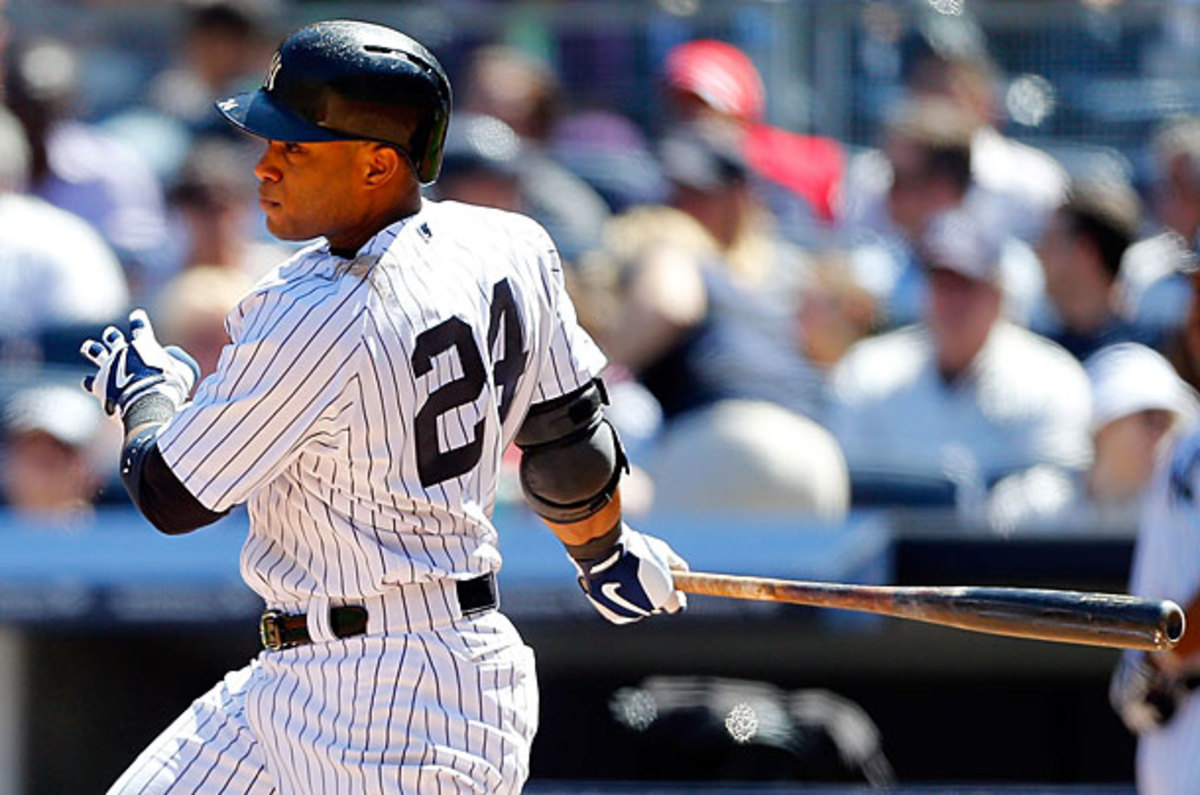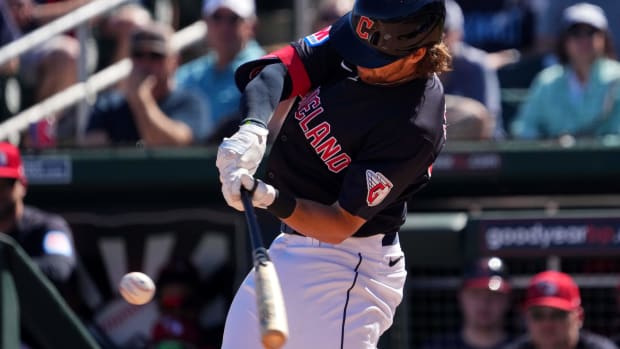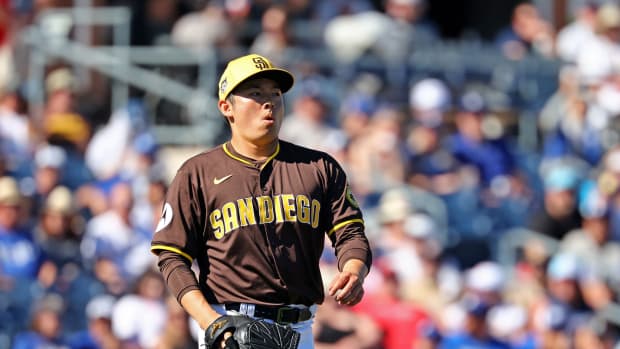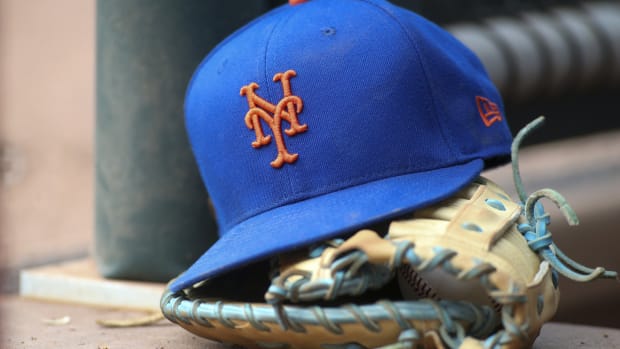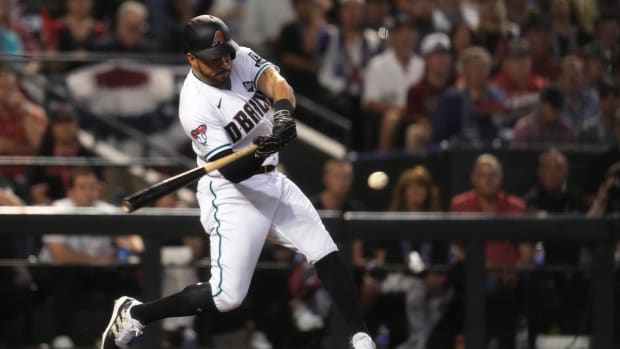What is he really worth?: Robinson Cano
Robinson Cano is reportedly seeking the richest contract in baseball history. (Jim McIsaac/Getty Images)
Over the next few days, SI.com will provide an analysis of some of the top free agents to explore just how much they are really worth on the open market. Next up: Robinson Cano, the consensus top free agent on the market.
Robinson Cano wants $310 million, but then again, who doesn't? That shocking figure, which would exceed the largest contract in baseball history by $35 million, is still the free agent second baseman's asking price, even after Fox Sports' Ken Rosenthal reported earlier this month that Cano's demand to break the $300 million threshold represented an in-season buyout of the opportunity cost of forgoing free agency. The Yankees aren't inclined to meet that price on a deal of 10 years, or any other length for that matter, particularly while they pray that a PED suspension takes a big bite out of Alex Rodriguez's 10-year, $275 million cautionary tale.
What's Cano actually worth, though? On Wednesday I kicked off a series that attempts to grapple with the astronomical price tags attached to this winter's top free agents, using a simple model that incorporates the following elements: a player's past performance, a projection of his future performance, the market cost of a marginal win, inflation and aging. Rather than pin a single value to a player, I showed how the changes in our assumptions with regard to any of those parameters can affect that estimate, thus producing a range that may or may not be in line with the rumors that are floating around.
I used Jacoby Ellsbury to illustrate the concepts, and concluded that a deal in the general range of the existing seven-year deals for Jayson Werth ($126 million) and Carl Crawford ($142 million) isn't out of line, even given the 29-year-old centerfielder's volatile career to date. Unless you're a tycoon of industry, you may blanch at that range of dollar figures produced by such an exercise, but even as impact players on the open market become more scarce, you can bet that teams will still whip out their checkbooks to spend some of that increased television revenue that is flooding the game.
Now I turn my attention to Cano, a 31-year-old five-time All-Star who towers above the rest of this year's free agent class. Using Baseball-Reference.com's version of Wins Above Replacement, no other position player in this year's market has produced even half the value of his 16.1 WAR over the past two seasons. The closest is Shin-Soo Choo at 7.6, and the closest of any major leaguer is 39-year-old pitcher Hiroki Kuroda at 9.6. Indeed, among all position players, only Mike Trout (20.1 WAR) has outdone Cano over that timespan. Expand the timeframe to three years, and only Miguel Cabrera (22.1) has surpassed Cano (21.5), but go to four years and the tables are turned, with Robbie having a 29.7 to 28.6 edge over Miggy. In other words, we're talking about a player whose consistency -- 7.6 WAR or more in three of the past four seasons -- gives him a legitimate claim as one of the top three position players in the game.
In estimating Cano's baseline value projection for 2014 using a weighted sample of his recent seasons, it doesn't matter a whole lot whether I use three years at 5/4/3 or four years at 5/4/3/2. (That former would take his 2013 WAR and multiply it by five then add four times his 2012 WAR and three times his 2011 WAR and then divide by 12, which is the sum of 5+4+3; the latter would also include two times his 2010 WAR and divide by 14.) The result for the first formula is 7.4, the second 7.5.
Cano is heading into his age-31 season with a stratospheric WAR and thus has further to fall than most, so I'm going to start with the assumption that he will decline at a rate of 0.5 wins per year. I'll stick with Russell Carleton's estimate of $5.276 million per win for hitters in their seventh year of service time and beyond, as well as a five percent rate of inflation.
Year | Age | WAR | Market $/W | Prod $ |
2013 | 30 | 7.6 | 5.28 | 40.1 |
2014 | 31 | 7.4 | 5.54 | 40.7 |
2015 | 32 | 6.9 | 5.82 | 39.8 |
2016 | 33 | 6.4 | 6.11 | 38.8 |
2017 | 34 | 5.9 | 6.41 | 37.5 |
2018 | 35 | 5.4 | 6.73 | 36.0 |
2019 | 36 | 4.9 | 7.07 | 34.3 |
2020 | 37 | 4.4 | 7.42 | 32.3 |
2021 | 38 | 3.9 | 7.80 | 30.0 |
2022 | 39 | 3.4 | 8.18 | 27.4 |
2023 | 40 | 2.9 | 8.59 | 24.5 |
Whoa, right? That last column is an estimate of the free-market value of Cano's annual production in dollars, and even with a significant decline over a 10-year period, this model suggests he can produce well above $30 million in annual value for most of the life of that deal — enough to justify the highest average annual salary in history, topping A-Rod's $27.5 million. Via this method, I get 51.0 WAR over the 10-year period, valued at an astronomical $341.4 million.
That seems ridiculously high, higher even than Cano's agents -- hip-hop mogul Jay-Z and Brodie Van Wagenen -- are reportedly asking. As long as I've brought them up, let's note that I'm not incorporating any non-baseball factors into this. I don't care about the marketing plan that Roc Nation Sports may be hatching in order to turn the second baseman into a transcendent icon; first, because it's overheated rhetoric and second, because it's the player and not the team who stand to reap the bulk of that benefit.
So forgetting that and still shaking our heads at that $341.4 million figure, let's get a bit more drastic with Cano's falloff. We'll peg his 2014 season at 7.0 wins and knock 0.6 wins off every year. Given those parameters, he still produces 43.0 WAR and a value of $282.9 million. Increase his rate of decline by 0.7 WAR per year from that 7.0 starting point, and even with his last two seasons coming in at 1.4 and 0.7 WAR, respectively, he would still produce 38.5 WAR overall and $248.7 million of value over 10 years. That's without touching our estimates for inflation or the value of a win. Using that last scenario and moving the rate of inflation one percentage point in either direction produces values of $238.7 million on the low side and $259.1 million on the high side, a small enough difference that it doesn't really move the needle much in either direction.
If a difference of $10 million higher or lower raises an eyebrow, let's remember that the gaps produced by my varying estimates aren't the point. For a big-market team that generally intends to position itself as a contender, the marginal value of a win is going to be higher than the industry average. If a player who costs them $250 million returns only $220 million in value, that's a small premium compared to a $50 million player producing only $20 million in value.
Back to the model. Sticking with a five percent rate of inflation and returning to a more normal decline of 0.5 WAR per year but lowering his 2014 baseline by a full win to 6.4 brings back values of 41.5 WAR and $275.2 million over 10 years. Lowering his 2014 baseline to 5.4 — thus matching his worst year in the past four, 2011 — still produces estimates of 31.5 WAR and $205.5 million over the next decade. In other words, even if we discount Cano's near-future work quite heavily, this model still returns values above $200 million over the next 10 years.
Suppose instead that we return to a more generous estimate of Cano's near-term work and his decline but introduce a more drastic hit in his value by moving him to DH for the final three years of his contract. Using the positional adjustments built into bWAR, the value of a full season at second base is +3 runs, while that at DH is −15, so we'll lop off an additional 18 runs (1.8 WAR) going into 2021. Starting at 7.4 WAR and a decline of 0.5 WAR per year, that produces a value of 4.4 WAR in 2020, but a drop to 2.1 in 2021 (4.4 minus 0.5 minus 1.8), and then 1.6 and 1.1 in the final two years. All told, that still produces estimates of 46.1 WAR and $300.6 million worth of value. Start the ball rolling at 6.4 WAR instead of 7.4, move the DH switch to a year earlier and it still brings back values of 34.3 WAR and $217.6 million. Again, even with a significant discount of his near-term work and a move to DH, he's still well above $200 million over the next decade.
The problem for Cano is that the Yankees and probably every other team have plenty of reasons to be gun-shy about handing out 10-year deals even to elite players. Putting aside the possibility of a suspension without pay, Rodriguez's $275 million deal doesn't look as though it's going to end well because years five and six produced a combined 2.6 WAR due to injuries. On the other hand, it's worth noting that over the course of the decade that would have been covered by his original $252 million deal (2001-2010), he produced a whopping 71.6 WAR, more than enough to justify the cost.
As for some others: Albert Pujols' 10-year, $240 million deal saw him drop from an average of 7.5 WAR over the previous three years to 5.0 in year one and 1.5 in year two. Prince Fielder dipped to 1.7 WAR in year two of his nine-year, $214 million contract and he was just traded to Texas. Joe Mauer is headed to first base after three years of his eight-year, $184 million deal. Mark Teixeira has produced just 6.8 WAR over the past three years due to injuries and decline and still has three to go on his $180 million deal, while Matt Kemp has delivered just 2.9 WAR in the first two years of his eight-year, $160 million deal due to injuries.
All of which raises the question of how much we can rely upon a model that builds in a gradual decline over a very long period instead of a drastic, career-threatening injury — but then, who can predict that? Maybe if I were building a model for pitchers, I'd assume each one would lose a year to Tommy John surgery given a long enough window. Pitcher or hitter, the longer the deal, the more likely it is that some such catastrophe comes about, which is why teams would rather sign contracts covering five or seven years instead of longer ones, even at a premium.
But just to illustrate my larger point, suppose we start again at 6.4 WAR and a 0.5 per yer decline. Then assume that Cano turns in a goose egg in 2018 due to injury, a value of 0.0 WAR (down from 4.9 the year before) and only partially rebounds to 3.0 WAR in 2019 before resuming his decline. Even then, he would be worth 32.6 WAR and $210.4 million.
In the end, I don't think Cano will get 10 years from anyone, particularly with the Red Sox (Dustin Pedroia), Dodgers (too many big contracts), Tigers (Ian Kinsler), Rangers (Jurickson Profar) and Phillies (Chase Utley) all set at the position. The Angels are hampered by the deals of Pujols and Josh Hamilton, while the Giants are deep into investments in Buster Posey and Hunter Pence. That list covers eight of the top nine teams in terms of 2013 payroll, with the Blue Jays the only one I haven't included. Maybe they'll be Cano's mystery team.
Eight years may be a more realistic target, and even as I twiddle with the parameters above, most reasonable estimates come back with Cano producing well over $200 million worth of value in that time. Start with 6.4 WAR and a decline of 0.5 per year, and the estimated return is $239.2 million worth of value over eight years. Bump him to DH over the final two years and incur that extra 1.8-win penalty and he still comes back at $211.8 million.






























